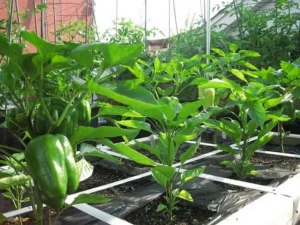Subsistence Farming: Subsistence farming is a traditional agricultural practice that plays a vital role in sustaining rural communities around the world. It involves the cultivation of crops and the rearing of livestock primarily for the subsistence and survival of the farmer’s family and local community. In this section, we will explore the concept of subsistence farming, delve into its definition within the context of geography, and examine various examples to gain a comprehensive understanding of this crucial practice.
Subsistence Farming: Definition and Geography:
Subsistence farming, also known as subsistence agriculture, is a farming system where farmers produce crops and raise livestock to meet their immediate needs for food, shelter, and clothing. Unlike commercial farming, which focuses on producing surplus goods for sale in the market, subsistence farming prioritizes self-sufficiency and the fulfillment of basic necessities.
The geography of subsistence farming is closely linked to the climate, terrain, and availability of resources in a particular region. It often thrives in areas with limited access to modern infrastructure, transportation, and markets. Developing countries and remote rural areas are more likely to practice subsistence farming due to socio-economic constraints and the absence of alternative livelihood options.
Examples of Subsistence Farming
- Shifting Agriculture (Slash-and-Burn):
Shifting agriculture, commonly known as slash-and-burn farming, is practiced in many tropical regions, including parts of Africa, South America, and Southeast Asia. In this method, farmers clear small plots of land by cutting down vegetation and burning it. The ashes provide temporary fertility to the soil, allowing farmers to grow crops for a few seasons until the soil’s nutrients are depleted. Then, they move to a new plot and repeat the process. This cyclical practice allows the previously used land to regenerate over time.
- Terrace Farming:

Terrace farming is prevalent in mountainous regions with steep slopes, such as the Andes in South America, the Himalayas in Asia, and the Philippines. Farmers create terraces, or stepped fields, on the slopes of hills or mountainsides to prevent erosion and maximize arable land. By constructing retaining walls and leveling the land, they create flat surfaces for cultivating crops. Terrace farming optimizes water usage by allowing rainwater to be stored in each terrace, preventing runoff and enabling irrigation.
- Intensive Subsistence Farming:
Intensive subsistence farming is common in densely populated areas of Asia, particularly in countries like China, India, and Bangladesh. Due to limited land availability, farmers practice intensive cultivation methods to achieve higher crop yields. They employ techniques like multiple cropping (growing two or more crops in a year), intercropping (growing different crops simultaneously in the same field), and using organic fertilizers to maximize productivity. This method requires significant labor input and careful resource management.
- Pastoral Nomadism:
Pastoral nomadism is a subsistence farming practice that involves the herding of livestock in search of grazing land and water sources. It is prevalent in arid and semi-arid regions, such as parts of Africa, the Middle East, and Central Asia. Nomadic herders, often belonging to communities like the Maasai in East Africa or the Bedouins in the Arabian Peninsula, move their herds of cattle, sheep, goats, or camels across vast distances to find suitable grazing areas. They rely on the livestock for food, clothing, and trade.
Conclusion:
Subsistence farming is a fundamental agricultural practice that sustains communities in various regions of the world. Its definition and geography are intrinsically connected, as the geographic context influences the farming methods and techniques employed. From slash-and-burn agriculture in tropical rainforests to terrace farming in mountainous terrains,


